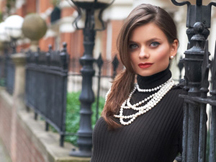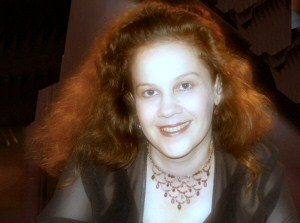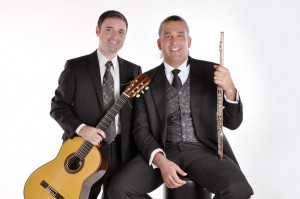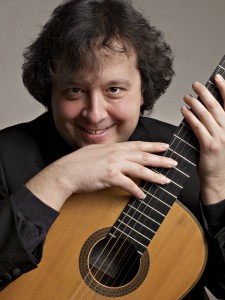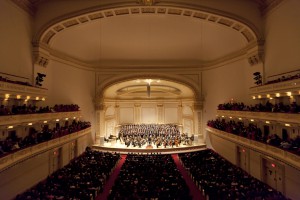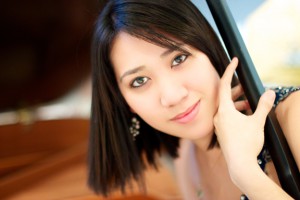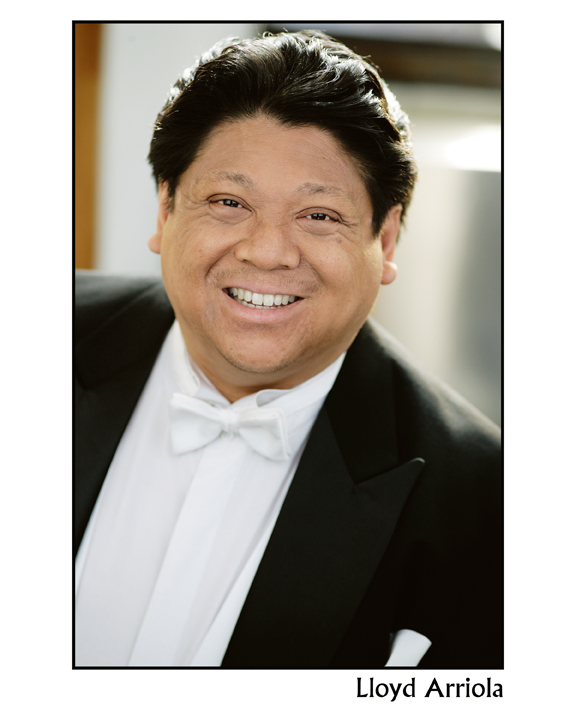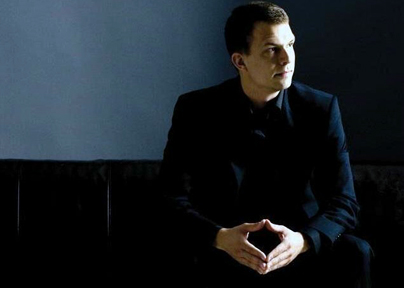As winners of the Michigan State University Collegiate Honors Recital Competition held in East Lansing, Michigan in February, five soloists were presented in a New York group recital under the sponsorship of Manhattan Concert Productions. The winners included Charles Morris, bass trombone; Bryan Guarnuccio, flute; Jennifer Cook, soprano; Dmitry Yanov-Yanovskiy, cello, and the subject of this review, pianist Haobing Zhu. They were selected by a jury of three, including Ralph Votapek, professor emeritus of piano at MSU (perhaps more commonly noted as the first Van Cliburn Competition Gold Medalist); Stephen Shipps, violinist, and Craig Arnold (the director of Manhattan Concert Productions). A varied repertoire, including Puccini, Dvorak, Gillingham, Berg, Liebermann, and Piazzolla, was heard before the pianist ever set foot onstage to close the recital with Haydn and Liszt, so one could only empathize with her for the challenge ahead.
On the subject of such group recitals, I am reminded of the insightful comments of my colleague Alexandra Eames, writing for New York Concert Review a few months ago: “This is an awkward and nerve-wracking experience; one waits in the wings unsure of when he will have to step onstage and face the specter of inevitable comparison. To relax and find one’s stride in just one or two pieces is extremely difficult and the performer must go through the same physical preparations (dressing for performance, arriving on time, trying the instrument, etc.) as he would for a full-length recital. Often the most sensitive artists can be sabotaged by the endeavor, whereas the more arrogant temperaments barrel through their nerves.” For Haobing Zhu, the comparison aspect was minimized by the fact that she was the only solo pianist (though creditable pianist collaborators included Hyekyung Lee, Hsin-Chan Yang, Tzu-Yi Chang, and Natalia A. Tokar); nothing, however, diminished the challenge of taking the audience back in time to the sonic and stylistic world of Haydn after Piazzolla and Berg, and then rallying her energies to close the concert with a blast of Liszt virtuosity. Ms. Zhu was up to the task.
With seeming nerves of steel, matched by a lovely stage presence, she approached Haydn’s Sonata in E Major (Hob. XVI: 31) with a beautifully clear sound and precise articulations. There was not a trace of rushing, and all was elegantly controlled. This is a work that, compared with other Haydn Sonatas, has seemed to attract pianists of a virtuosic bent, as it especially invites a crisp and detached Horowitzian touch, has a brilliant last movement, and is over in a flash. In a way it was a wise choice for not taxing excessively the already satiated audience. Ms. Zhu maximized its brilliance and combined her technical polish with singing phrases, which showed a tasteful degree of liberty. Her second movement (incidentally a movement that never sounds Allegretto, tending more towards Adagio) was generously stretched with expressive phrasing. The final Presto was flawless and sparkling.
Liszt’s transcription of the Waltz from Gounod’s Faust (s.407) followed. Perhaps I need a disclaimer here that, having performed this very piece on the same piano and stage just six months ago, I must set aside some preconceptions and preferences. A good performance usually can overcome those – and Ms. Zhu’s largely did. She launched into it zealously and with extreme speed, bringing out the diabolical element even in the opening “villagers’ dance,” which one often hears in a slightly slower pesante tempo than the one she took. She had just the right fearless approach for such a showpiece, and the excitement never lagged. At times I was surprised by the extremely generous pedal, which—combined with the flurry of octaves and the piano’s resonant bass—overwhelmed some details; assuming, though, that the depicted village merriment involves a bit of debauchery and drink, some drowning in pedal could arguably be considered to be in keeping with the spirit. A bit of messiness is par for the course in this work as well, but Ms. Zhu kept things well in hand. It really was astonishing considering the abovementioned challenges of this recital format.
If one were to make any suggestions, they would be that the lyrical central sections be more operatic, with long-breathed singing lines, and that the dance parts be a bit more danceable and a bit less rushed. To put things another way, one could want more singer and dancer, but there was plenty of pianist. Ms. Zhu is a pianist through and through, and she should have a bright future.

